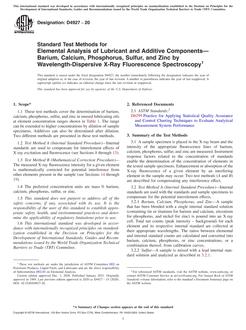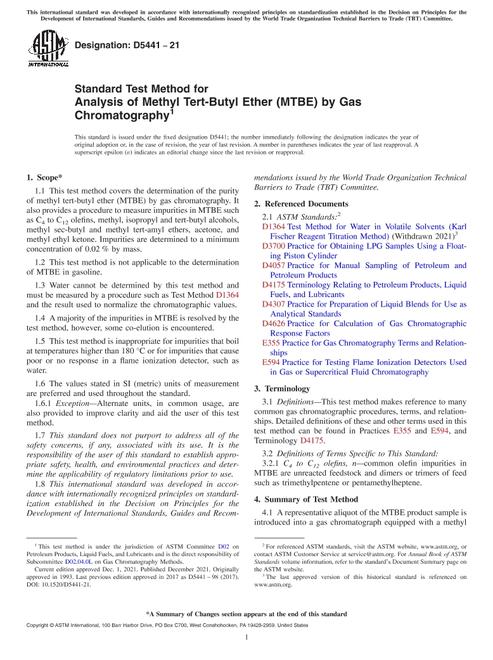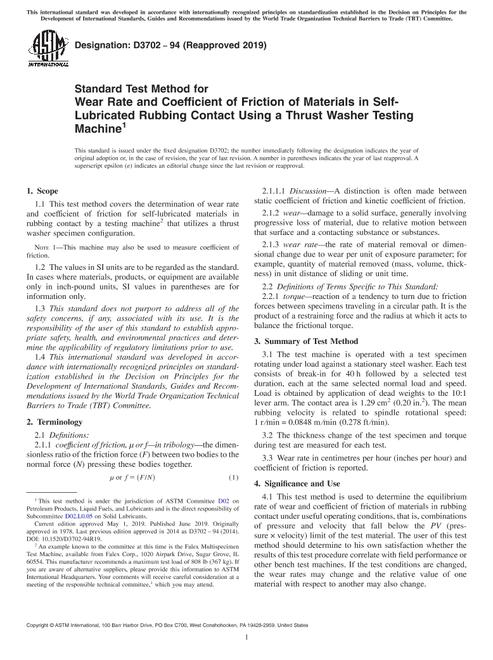-
-
Available Formats
- Availability
- Priced From ( in USD )
-
Available Formats
-
- Immediate download
- $72.00
- Add to Cart
-
- Printed Edition
- Ships in 1-2 business days
- $72.00
- Add to Cart
-
- Printed Edition + PDF
- Immediate download
- $93.60
- Add to Cart
Customers Who Bought This Also Bought
-

ASTM D4927-20
Priced From $62.40 -

ASTM D4289-24a
Priced From $75.60 -

ASTM D5441-21
Priced From $64.80 -

ASTM D3702-94(2019)
Priced From $57.60
About This Item
Full Description
The test method is limited by the capabilities of the equipment (test rig and gears), and the performance observed may not directly relate to scuffing performance observed with spiral bevel on hypoid gearing. It is also limited to discriminating between oils with mild EP additives or less. Lubricants containing higher levels of additives, that is, those meeting the requirements of API GL4 or GL5, generally exceed the maximum load capacity of the test rig and, therefore, cannot be distinguished for their scuffing capabilities by this test method.
Document History
-
ASTM D5182-19
Standard Test Method for Evaluating the Scuffing Load Capacity of Oils (FZG Visual Method)- Most Recent
-
ASTM D5182-97(2014)
Standard Test Method for Evaluating the Scuffing Load Capacity of Oils (FZG Visual Method)- Historical Version
-
ASTM D5182-97(2008)
currently
viewing
Standard Test Method for Evaluating the Scuffing Load Capacity of Oils (FZG Visual Method)- Historical Version
-
ASTM D5182-97(2002)e1
Standard Test Method for Evaluating the Scuffing Load Capacity of Oils (FZG Visual Method)- Historical Version
-
ASTM D5182-97e1
Standard Test Method for Evaluating the Scuffing Load Capacity of Oils (FZG Visual Method)- Historical Version





